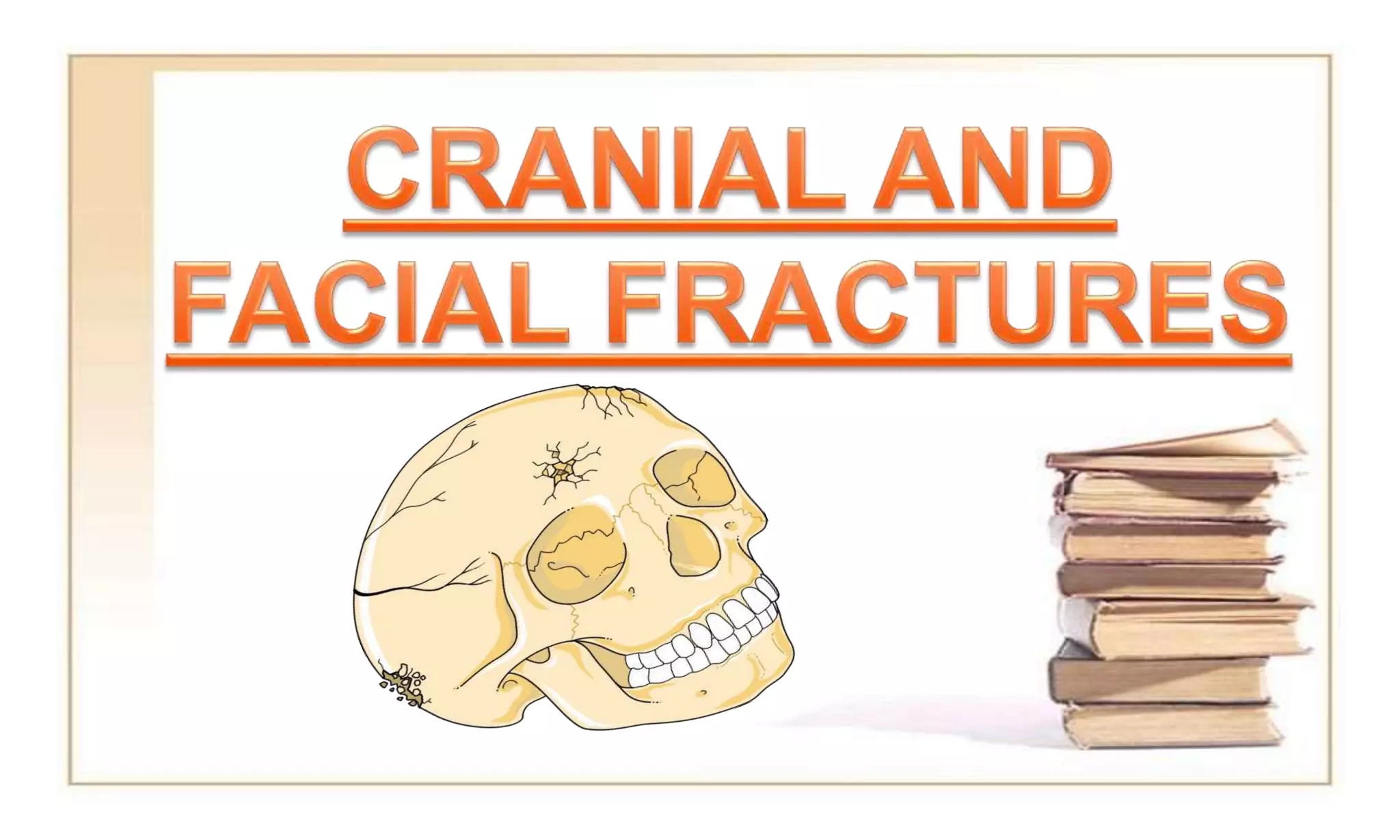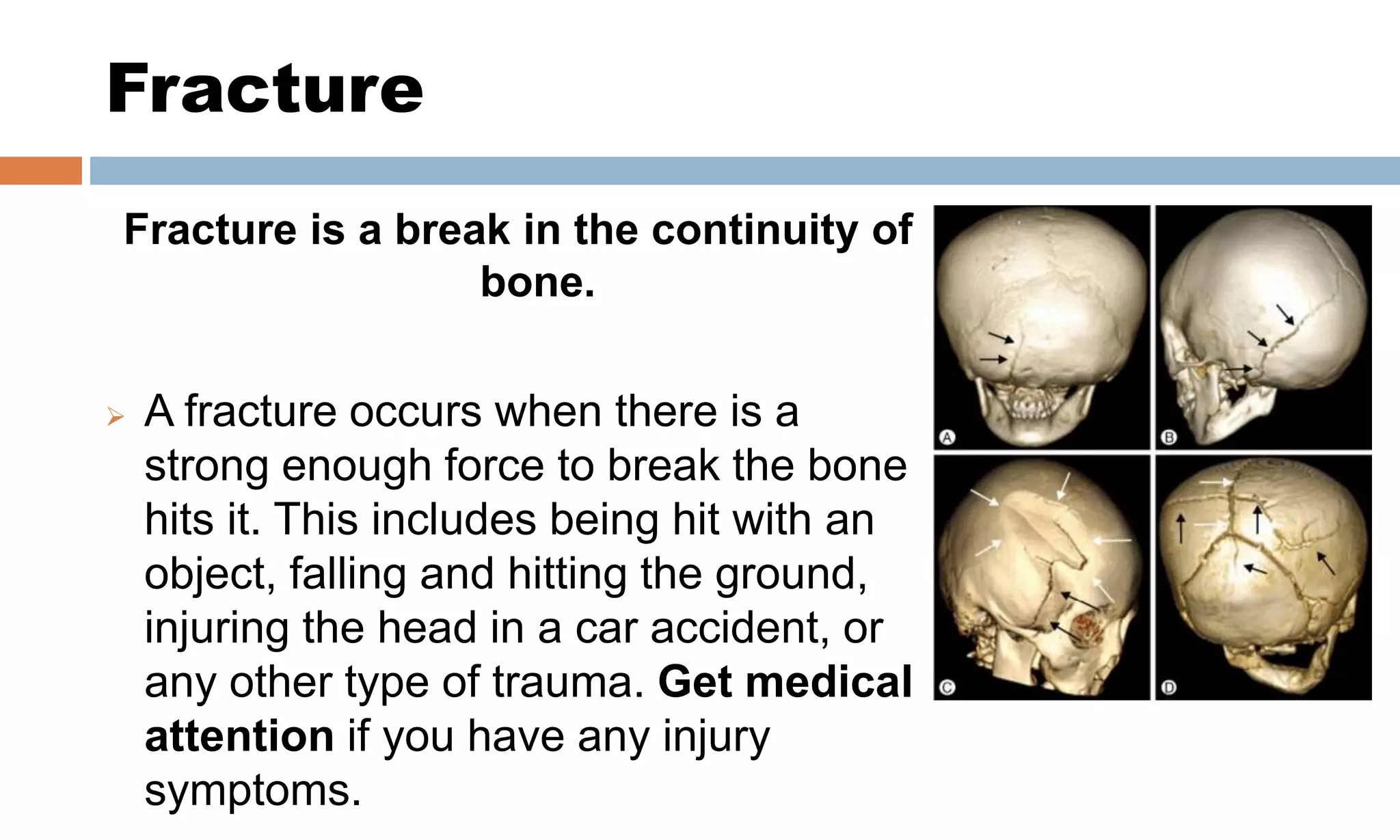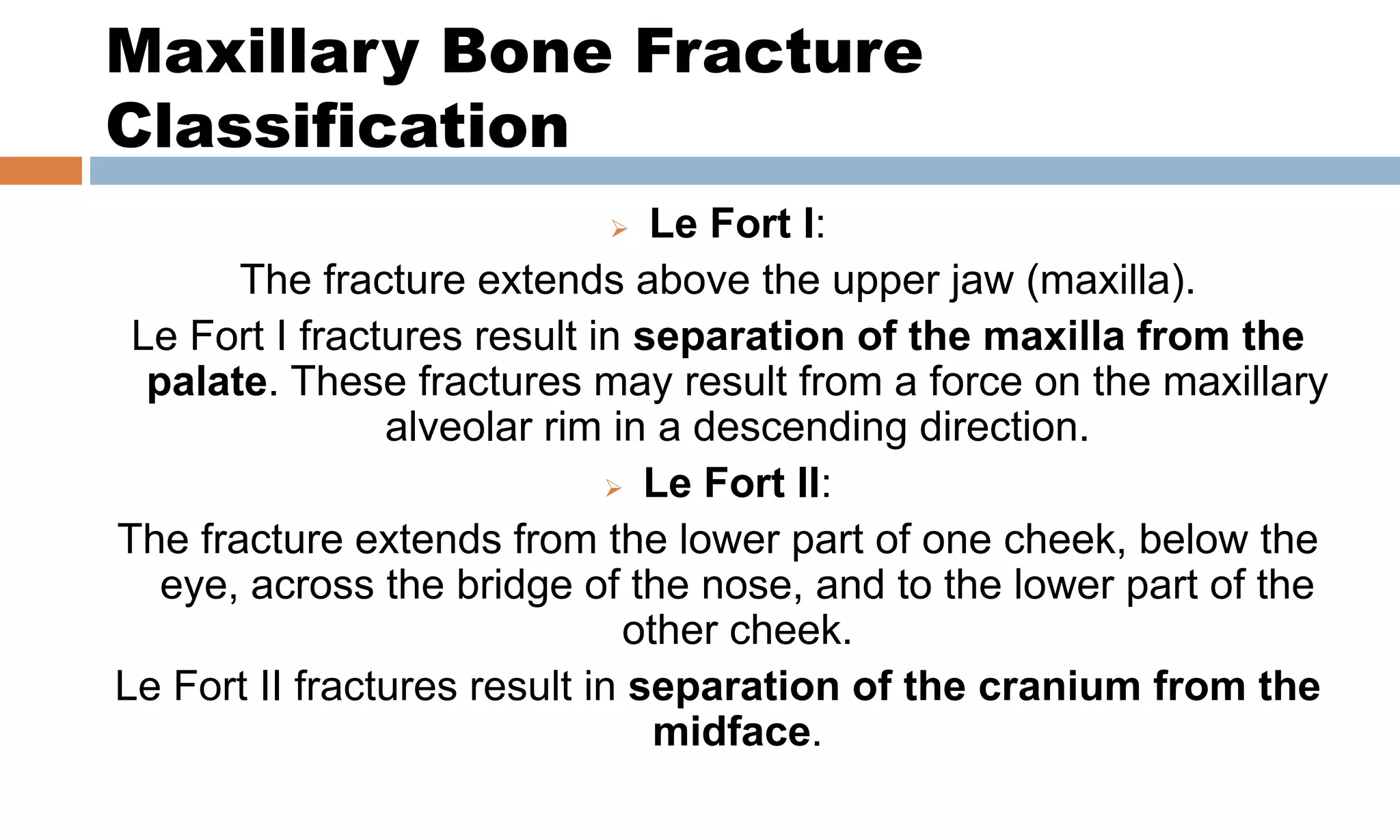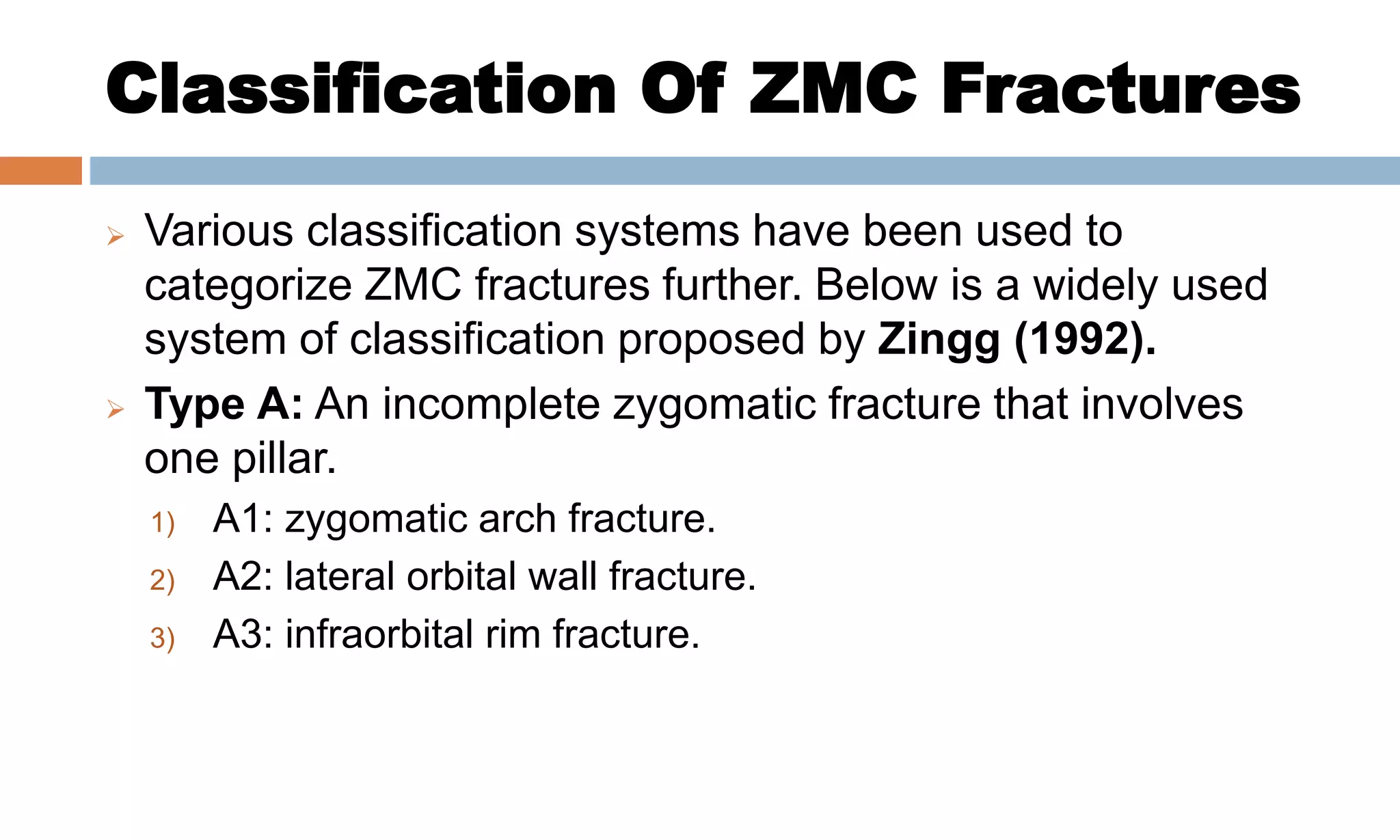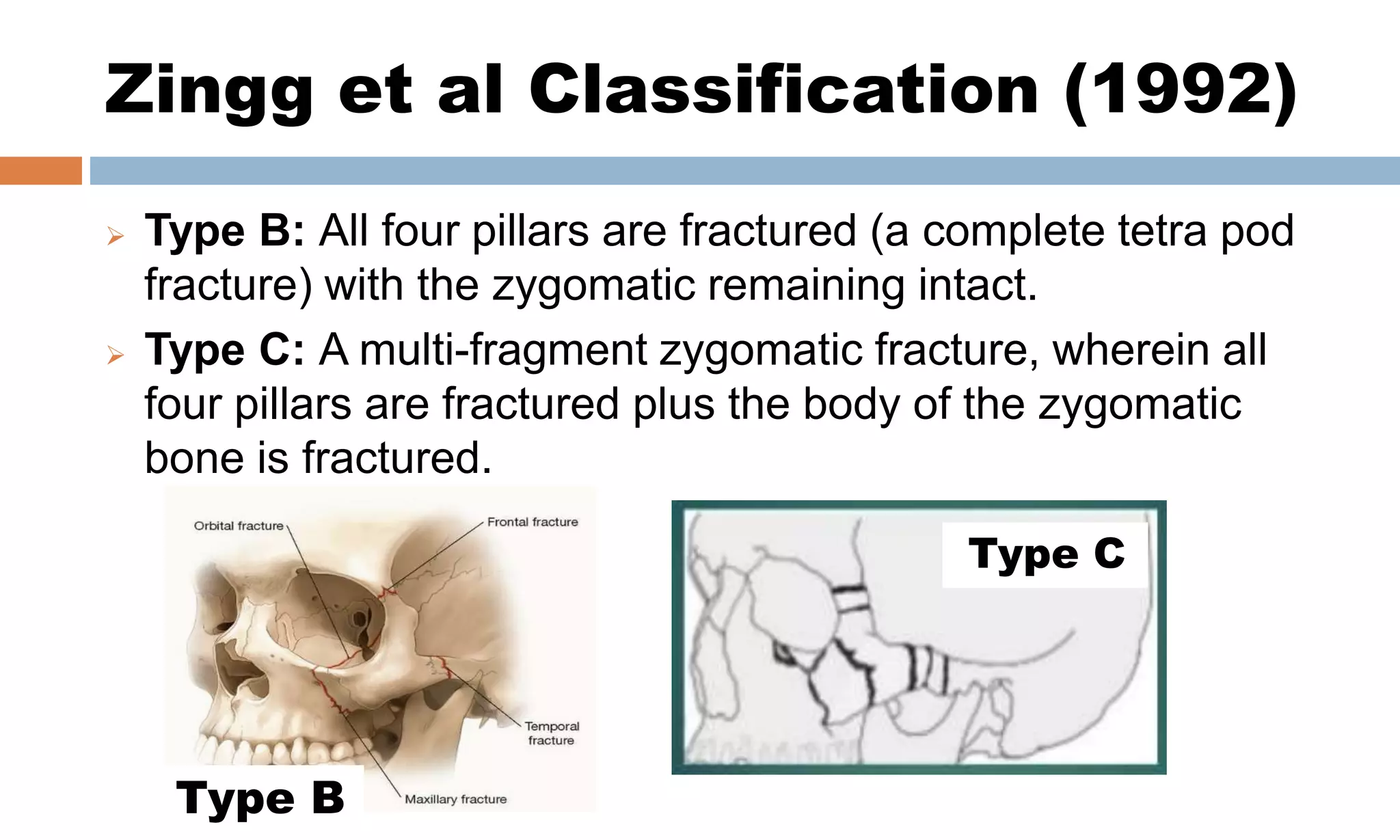Fractures occur when a force breaks the continuity of a bone. The document defines and describes different types of fractures that can occur in facial bones and the cranium. Facial fractures include nasal bone fractures, maxillary bone fractures (classified using the Le Fort system), zygomatic bone fractures, and mandible fractures. Cranial fractures can be closed or open, depressed or basal, and are also classified as linear or comminuted. The document focuses on the anatomy and characteristics of specific facial and cranial bones as well as classifications of fractures that may occur in these areas.
